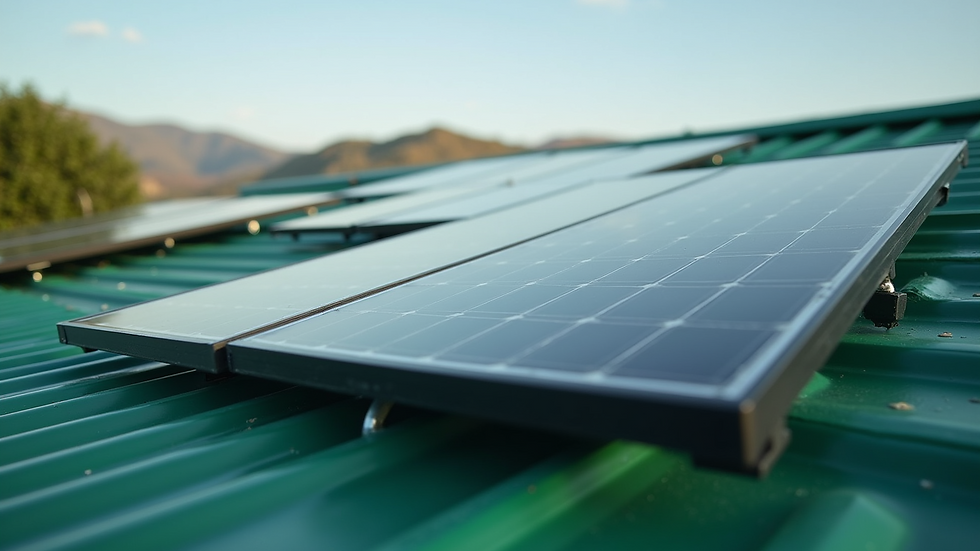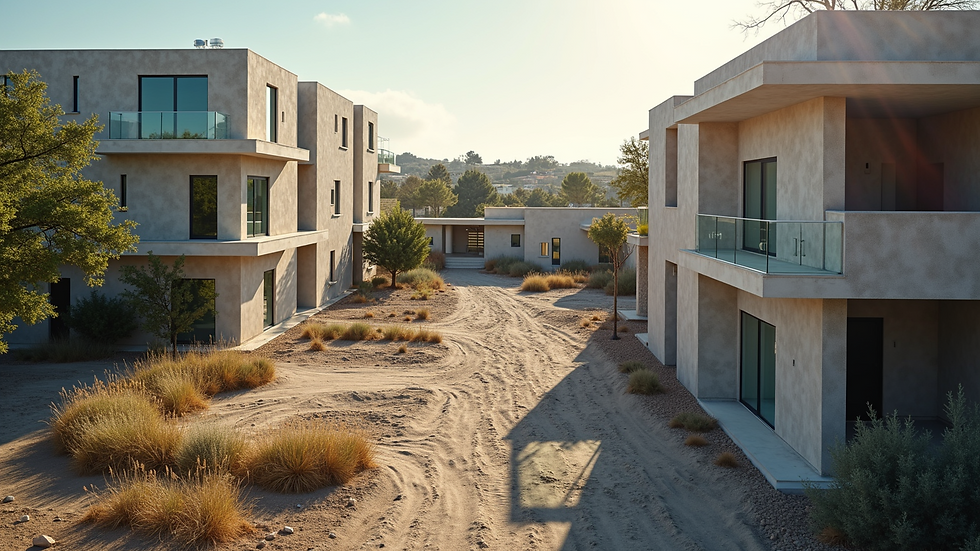Strategies for Creating Eco-Friendly Buildings
- Eng. Evans Nusu

- Aug 23
- 3 min read
Creating eco-friendly buildings is no longer just a trend but a necessity for a healthier planet. With increasing awareness about climate change and resource depletion, adopting sustainability strategies in construction is essential. This blog post explores practical and effective ways to design and build structures that minimize environmental impact while maximizing efficiency and comfort.
Understanding Sustainability Strategies in Building Design
Sustainability strategies in building design focus on reducing energy consumption, minimizing waste, and using renewable resources. These strategies aim to create buildings that are environmentally responsible and resource-efficient throughout their life cycle—from planning and construction to operation and demolition.
Some key sustainability strategies include:
Energy Efficiency: Using insulation, energy-efficient windows, and HVAC systems to reduce energy use.
Water Conservation: Installing low-flow fixtures and rainwater harvesting systems.
Material Selection: Choosing recycled, renewable, or locally sourced materials.
Waste Reduction: Implementing construction waste management plans.
Indoor Environmental Quality: Ensuring good ventilation and using non-toxic materials.
By integrating these strategies, builders can significantly reduce the carbon footprint of their projects.

Key Sustainability Strategies for Eco-Friendly Construction
To successfully implement sustainability strategies, it is important to focus on several core areas:
1. Site Selection and Planning
Choosing the right site can reduce environmental impact. Avoiding ecologically sensitive areas and preserving natural vegetation helps maintain biodiversity. Planning for optimal building orientation maximizes natural light and ventilation, reducing energy needs.
2. Energy-Efficient Design
Incorporate passive solar design principles such as south-facing windows and shading devices. Use high-performance insulation and energy-efficient lighting like LEDs. Installing renewable energy systems such as solar panels or wind turbines can further reduce reliance on fossil fuels.
3. Water Management
Design systems to capture and reuse rainwater for irrigation or flushing toilets. Use drought-resistant landscaping to minimize water use. Efficient plumbing fixtures also contribute to water savings.
4. Sustainable Materials
Select materials with low embodied energy and high durability. Bamboo, reclaimed wood, recycled steel, and low-VOC paints are excellent choices. Using local materials reduces transportation emissions.
5. Waste Minimization
Plan for recycling and reusing construction debris. Prefabrication techniques can reduce onsite waste. Educate workers on waste segregation and disposal.
6. Indoor Environmental Quality
Use natural ventilation and daylighting to improve occupant comfort. Choose non-toxic, low-emission materials to enhance indoor air quality.
By applying these sustainability strategies, buildings become more resilient, cost-effective, and environmentally friendly.

What are the 7 Principles of Sustainable Construction?
Sustainable construction is guided by seven fundamental principles that ensure environmental, social, and economic benefits:
Minimize Resource Consumption
Use materials and energy efficiently to reduce waste and depletion of natural resources.
Protect and Enhance Ecosystems
Preserve natural habitats and promote biodiversity around the construction site.
Use Renewable Resources
Prioritize materials and energy sources that can be replenished naturally.
Reduce Pollution and Waste
Implement strategies to minimize emissions, effluents, and solid waste.
Design for Longevity and Flexibility
Create buildings that can adapt to changing needs and have a long service life.
Promote Health and Well-being
Ensure good indoor air quality, natural lighting, and thermal comfort for occupants.
Encourage Social and Economic Equity
Support local communities and provide fair labor conditions.
These principles serve as a roadmap for architects, engineers, and builders aiming to create sustainable structures.
Practical Tips for Implementing Sustainable Building Solutions
Implementing sustainable building solutions requires careful planning and collaboration among all stakeholders. Here are some actionable recommendations:
Conduct Energy Modeling: Use software to simulate energy performance and optimize design choices.
Engage Local Experts: Collaborate with local architects and engineers familiar with regional climate and materials.
Incorporate Green Certifications: Aim for certifications like LEED or BREEAM to validate sustainability efforts.
Invest in Training: Educate construction teams on sustainable practices and technologies.
Monitor Building Performance: Use sensors and smart systems to track energy and water use post-construction.
Communicate Benefits: Highlight cost savings, health improvements, and environmental impact to clients and occupants.
For more detailed information on sustainable building solutions, visit Evans Engineering and Construction's sustainability page.

Moving Forward with Eco-Friendly Building Practices
The future of construction lies in sustainability. By adopting these strategies, the industry can reduce its environmental footprint and create healthier living spaces. Continuous innovation, education, and commitment are key to advancing eco-friendly building practices.
Investing in sustainable buildings not only benefits the planet but also offers long-term economic advantages through energy savings and increased property value. As awareness grows, demand for green buildings will continue to rise, making sustainability a critical component of modern construction.
Embracing these sustainability strategies today will pave the way for a greener, more resilient tomorrow.











Comments